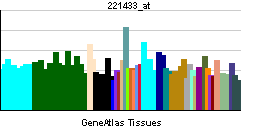Study Reveals Resilience Reduces Emotional Distress in Girls with Juvenile Fibromyalgia

Juvenile fibromyalgia, a chronic pain disorder predominantly affecting adolescent girls, has been the focus of a groundbreaking study conducted by researchers at the University of Barcelona. This study, published in the journal Pain on July 2, 2025, underscores the significance of resilience—the capacity to adaptively cope with adversity—as a crucial factor in mitigating emotional distress, including symptoms of depression and anxiety, in this vulnerable population.
The research was led by Dr. Marina López-Solà, a professor at the Faculty of Medicine and Health Sciences at the University of Barcelona and a researcher at the Institute of Neurosciences (UBneuro) and the August Pi i Sunyer Biomedical Research Institute (IDIBAPS). According to Dr. López-Solà, the study's findings indicate that while resilience does not alleviate the physical symptoms associated with juvenile fibromyalgia, it significantly contributes to emotional well-being. "Our findings suggest that a resilient profile can reduce associated suffering despite the persistence of physical symptoms," she stated.
The study involved an analysis of resilience and brain function among 41 girls diagnosed with juvenile fibromyalgia and 40 girls without chronic pain. The researchers adopted a functional definition of resilience, viewing it as the presence of psychological resources that enable these girls to adapt to chronic pain, rather than merely the absence of psychopathology. This approach allowed for the identification of distinct resilience profiles within the sample, providing insights into how these profiles correlate with specific brain connectivity patterns.
Utilizing surveys to evaluate two critical resilience skills—the ability to reinterpret challenging situations positively and the capacity for perseverance—the researchers found that girls with higher resilience exhibited fewer emotional symptoms and greater self-compassion. Dr. Maria Suñol, the study's first author, emphasized that these characteristics could be cultivated through therapeutic interventions. "Enhancing resilience through psychological skills training could improve the quality of life for these patients," she noted.
The brain function analysis involved functional neuroimaging at rest, revealing that girls with high resilience demonstrated greater connectivity in the default mode network (DMN) compared to their low-resilience counterparts. This network is crucial for self-referential thinking and cognitive flexibility. Dr. López-Solà explained, "Increased connectivity may indicate better coordination among brain regions, potentially enhancing cognitive flexibility and adaptation to adverse situations."
The implications of this research extend beyond immediate emotional support. The authors suggest that the patterns of brain connectivity observed could serve as biomarkers for identifying adolescents with chronic pain who are at a higher risk of emotional distress. This insight may guide future therapeutic strategies aimed at enhancing resilience early in development, thereby preventing the chronicization of emotional suffering and associated neurofunctional alterations.
Despite the study's observational nature, which limits the establishment of causal relationships, it lays the groundwork for future research. The team is currently designing a broader study to explore whether the observed results in juvenile fibromyalgia can be replicated in other chronic pain conditions and to further investigate the predictive power of functional connectivity in determining resilience trajectories.
The study's findings align with the growing recognition of the need for psychological interventions in chronic pain management. Psychological therapies such as acceptance and commitment therapy, compassion-based therapy, and mindfulness-based cognitive therapy are highlighted as potential methods to enhance resilience and emotional well-being among adolescents suffering from chronic pain disorders. By fostering self-compassion and adaptive coping strategies, these therapies could play a pivotal role in the treatment of juvenile fibromyalgia, offering a holistic approach to managing both physical and emotional aspects of the condition.
In summary, while resilience may not lessen the physical pain experienced by girls with juvenile fibromyalgia, it substantially influences their emotional state and overall quality of life. The insights from this study herald a promising direction for future therapeutic interventions aimed at fostering resilience, potentially transforming the care paradigm for young patients facing chronic pain challenges. As Dr. López-Solà concluded, "Understanding and enhancing resilience could be key to improving outcomes for adolescents with fibromyalgia."
For further details, refer to the article by Maria Suñol et al., "Neurophysiology of resilience in juvenile fibromyalgia," published in Pain (2025). DOI: 10.1097/j.pain.0000000000003562.
Advertisement
Tags
Advertisement





